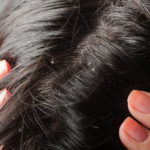What causes female mustache?
Hair distribution pattern in men and women differs due to hormonal differences. Excessive hair growth in women is called hirsutism. In the US, up to 10% of women are affected by this condition due to an increase in the level of male hormones or androgens. It may or may not be associated with a sinister medical condition.
What causes mustache in females?
Though fine hair covers almost the whole body before puberty, they become coarser after puberty due to the effect of androgens (male sex hormones) though, in some areas like scalp and eyebrows, hair growth is independent of these hormonal changes. Dihydrotestosterone is the androgen that acts on hair follicles to convert them to coarse hair. This androgen is present in blood and also forms locally in the skin by conversion of testosterone. This requires the presence of an enzyme in the skin called 5-alpha-reductase. Normally in women, 5-alpha-reductase is not active while in women with a mustache, this enzyme is hyperactive.

Congenital adrenal hyperplasia: In women, these androgens are normally produced in adrenal glands in very small amounts. In a condition called ‘congenital adrenal hyperplasia’, both adrenal glands increase in size and produce an excessive amount of androgens. This results in hirsutism and the appearance of mustache in women.
Cushing syndrome: Pituitary and adrenal tumors may result in hirsutism due to increased androgen production.
Tumors: Ovarian and adrenal tumors which present with hirsutism may be benign or malignant.
Polycystic ovary syndrome: PCOS is an endocrine disorder of women due to androgen excess which is produced by the ovary. It is characterized by ovulatory dysfunction, male pattern growth of hair including mustache, acne, or rarely excessive masculinization. It is the most common cause of androgen excess in females and results in chronic anovulation and infertility.
Familial hirsutism: In many cases, there is a positive family history of hirsutism. A familial occurrence may also be related to congenital adrenal hyperplasia and PCOS. This is diagnosed after excluding all of the above causes.
Androgen supplementation: This is seen in female athletes who take androgens to improve their sports performance. Androgens not only cause increased bulk of muscles or masculinization but may also result in increased growth of facial hair.
Idiopathic hirsutism: This condition begins at puberty and the cause of the appearance of mustache and other excessive hair is not known. If these changes appear for the first time during middle age or later, then the adrenal or ovarian tumor is suspected.
Treatment or hirsutism
A complete assessment is essential. The time of appearance of facial hair, at puberty or later, the onset of menses, fertility status, and any treatment with steroids are recorded. Imaging is performed by ultrasonography, computed tomography, or magnetic resonance imaging. Blood analysis is done for hormone levels. Depending on the above information, treatment of the cause is done.
Cosmetic treatment: Cosmetic treatment for facial hair is done which ranges from bleaching to temporary or permanent hair removal. Some of the methods of hair removal include shaving, plucking, waxing, or application of depilatory creams. Laser is also used for hair removal.
Hirsutism requires a very rational approach to treatment with a sensitive touch. Though diagnostic testing is time-consuming, it determines the type of intervention to treat the cause. Many patients require counseling and motivation.



























